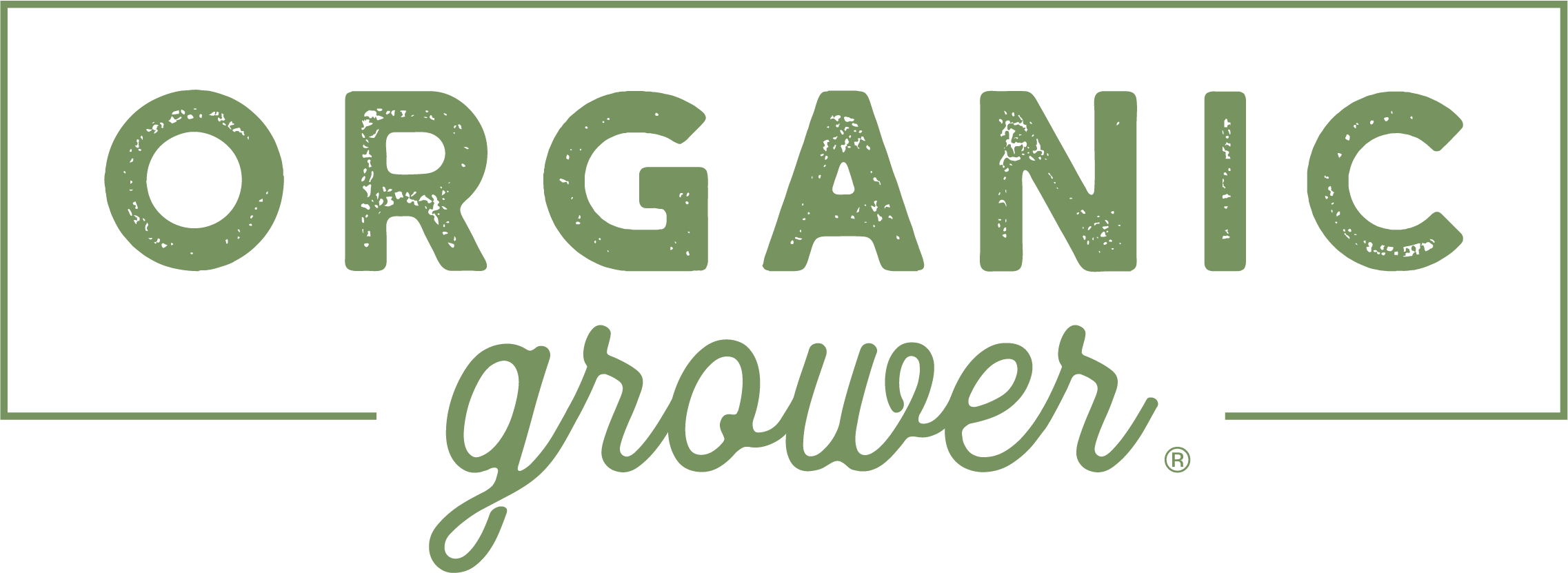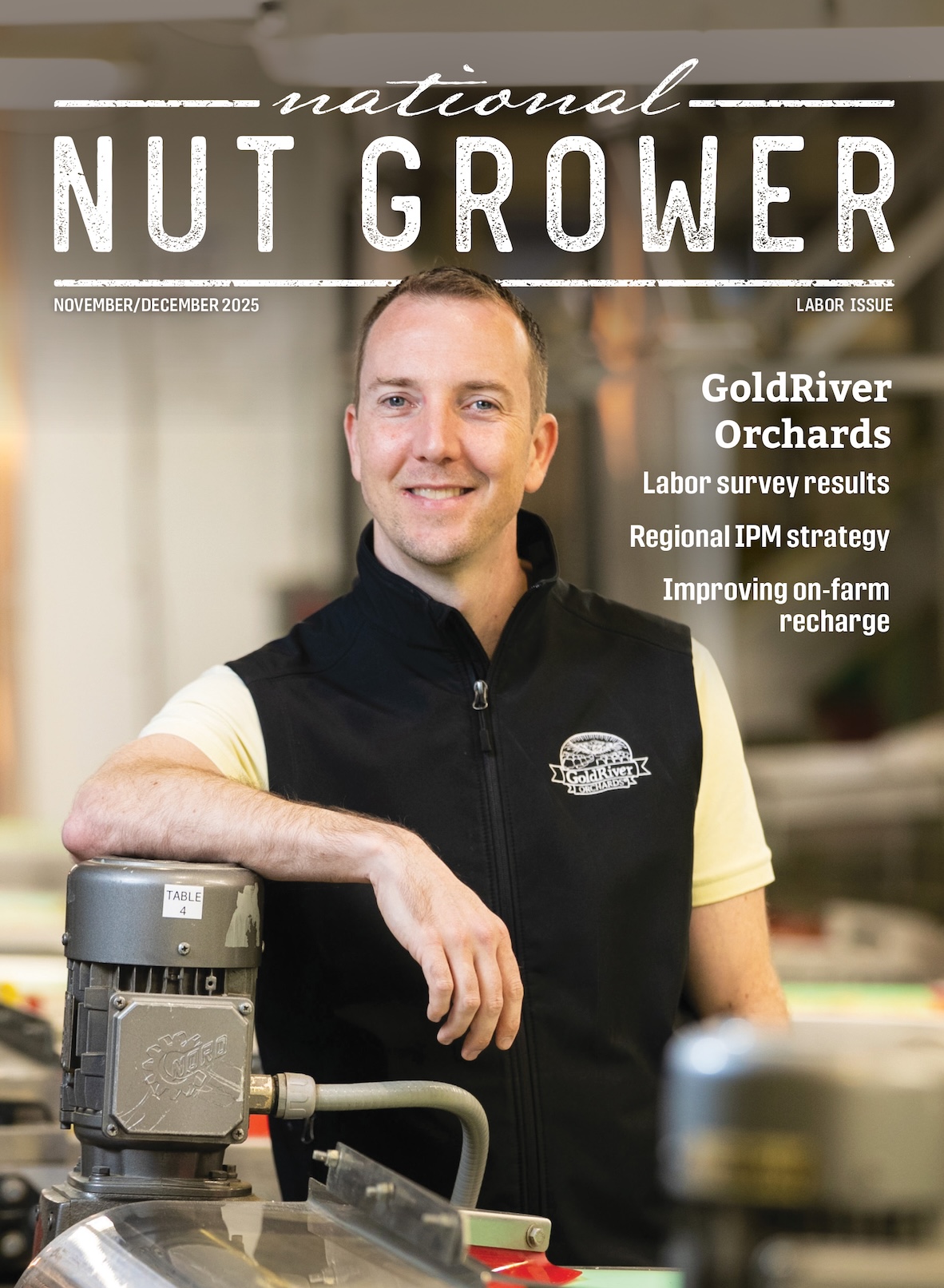
November/December 2025
Regional IPM for navel orangeworm
Moving beyond the farm gate with shared data and coordinated strategies
Navel orangeworm (NOW) remains a significant pest threat to California’s almond, pistachio and walnut industries. Every grower has felt the sting of NOW damage, even occasionally or despite following standard management practices.
For years, most pest management has been framed within the boundaries of individual orchards. But NOW does not respect those boundaries. What happens in one crop, in one block, in one season, inevitably ripples outward to others. When unsuccessful sanitation of any nut crops or timing failures occur in almonds in spring or early in the summer, pistachios and walnuts inherit that pressure later in the year. Our successes — and failures — are intertwined, and the future of NOW management depends on taking a regional approach.
How infestations spread across crops
Almonds, by virtue of their earlier hull split, often serve as the starting point for population buildup at the first flight in April. If NOW infestations aren’t adequately controlled through precise timing — considering trap catches, hull split (flight 2) and crop development — the moths that emerge magnify the risk for pistachio early splits during flight 3 and for later crops during flight 4.
Walnuts, which mature even later, can then inherit the compounding pressure from both almonds and pistachios. No orchard fights this pest alone, and no grower can afford to overlook what neighbors are doing.
Limits of traditional orchard-level management
Traditionally, pest control advisors and growers have relied on orchard-level observations: a handful of traps, crop phenology and some intuition about when sprays might be most effective. This approach has limits.
A single trap in a single block rarely provides enough information to capture the complexity of regional flight dynamics. Spraying on a “best guess” of hull split timing misses the bigger picture, and even the best sanitation practices in one orchard can be undone by poor sanitation nearby. What seems like a local issue is actually a regional one, and purely a localized strategy can’t solve it.
The promise of regional IPM
This is why the emerging concept of regional integrated pest management (IPM) is critical. Houston Wilson and colleagues, with support from the Almond Board of California and the California Pistachio Research Board, are piloting projects that expand the focus from single orchards to the broader landscape.
At the center of this effort is the development of a decision aid system (DAS) for NOW — an online platform developed by David Crowder of Washington State University. The DAS aggregates trap and weather data, forecasts pest activity, links it to crop vulnerability windows and provides growers with actionable analytics beyond the local level so they can successfully manage NOW across regions.
By combining information from a network of traps and weather stations across multiple orchards and crops, the DAS gives a more accurate picture of NOW populations, enabling growers to anticipate flight peaks with enough lead time to act.
This year, the project gained major traction. American Pistachio Growers (APG) was awarded a $1 million Biologically Integrated Farming Systems (BIFS) grant from the California Department of Food and Agriculture (CDFA) to formally launch the Regional IPM Network for Navel Orangeworm. Additional complementary support from the Department of Pesticide Regulation, the Almond Board and the California Pistachio Research Board further strengthens the effort. Together, these programs will accelerate development of a connected, data-driven framework for coordinated pest management across crops and counties.
The pilots are underway in west Fresno County under Wilson’s direction and the Modesto area under the leadership of Jalendra Rijal. Together, the pilots are establishing a network of growers, advisers and researchers who are sharing data, coordinating practices and aligning management strategies. The DAS doesn’t prescribe blanket rules but enhances precision in individual decisions within a regional context.
With better information, growers can synchronize their timing, coordinate sanitation and chemical rotations, and reduce the chances that one orchard’s poor practices spill over to its neighbors.
Benefits and future outlook
The potential benefits of regional IPM are substantial. Precisely timed sprays mean fewer applications are needed, and those that are applied are more effective. This can reduce overall pesticide use, which is a key step toward meeting California’s Sustainable Pest Management roadmap. It also translates to improved profitability for growers through lower pesticide costs, higher-quality bonus prices, reduced direct crop loss, decreased aflatoxin contamination risk, and a more sustainable farm and product in the eyes of the California Department of Pesticide Regulation and global markets.
While the Fresno and Modesto pilots are still in early stages, the vision is clear: a statewide network of DAS-enabled regions providing real-time, regional data and a framework for cooperative management. Making this vision a reality will require participation, because the value of regional IPM depends on the number of growers who contribute and share information.
For growers in West Fresno County and the Modesto region, opportunities to join these efforts will open in 2026. The more growers who participate, the sharper and more useful the data becomes — and the stronger the collective defense against this pest.
NOW has always been a shared challenge. The only way to truly get ahead of it is with a shared solution — one that looks beyond the farm gate and embraces managing this pest together.









